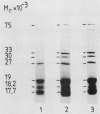Abstract
Cyanobacteria acclimate to changes in light by adjusting the amounts of different cellular compounds, for example the light-harvesting macromolecular complex. Described are the acclimatization responses in the light-harvesting system of the cyanobacterium Anacystis nidulans following a shift from high intensity, white light to low intensity, red light.
The phycocyanin and chlorophyll content and the relative amount of the two linker peptides (33 and 30 kilodaltons) in the phycobilisome were studied. Both the phycocyanin and chlorophyll content per cell increased after the shift, although the phycocyanin increased relatively more. The increase in phycocyanin was biphasic in nature, a fast initial phase and a slower second phase, while the chlorophyll increase was completed in one phase. The phycocyanin and chlorophyll responses to red light were immediate and were completed within 30 and 80 hours for chlorophyll and phycocyanin, respectively. An immediate response was also seen for the two phycobilisome linker peptides. The amount of both of them increased after the shift, although the 33 kilodalton linker peptide increased faster than the 30 kilodalton linker peptide. The increase of the content of the two linker peptides stopped when the phycocyanin increase shifted from the first to the second phase. We believe that the first phase of phycocyanin increase was due mainly to an increase in the phycobilisome size while the second phase was caused only by an increase in the amount of phycobilisomes. The termination of chlorophyll accumulation, which indicates that no further reaction center chlorophyll antennae were formed, occurred parallel to the onset of the second phase of phycocyanin accumulation.
Full text
PDF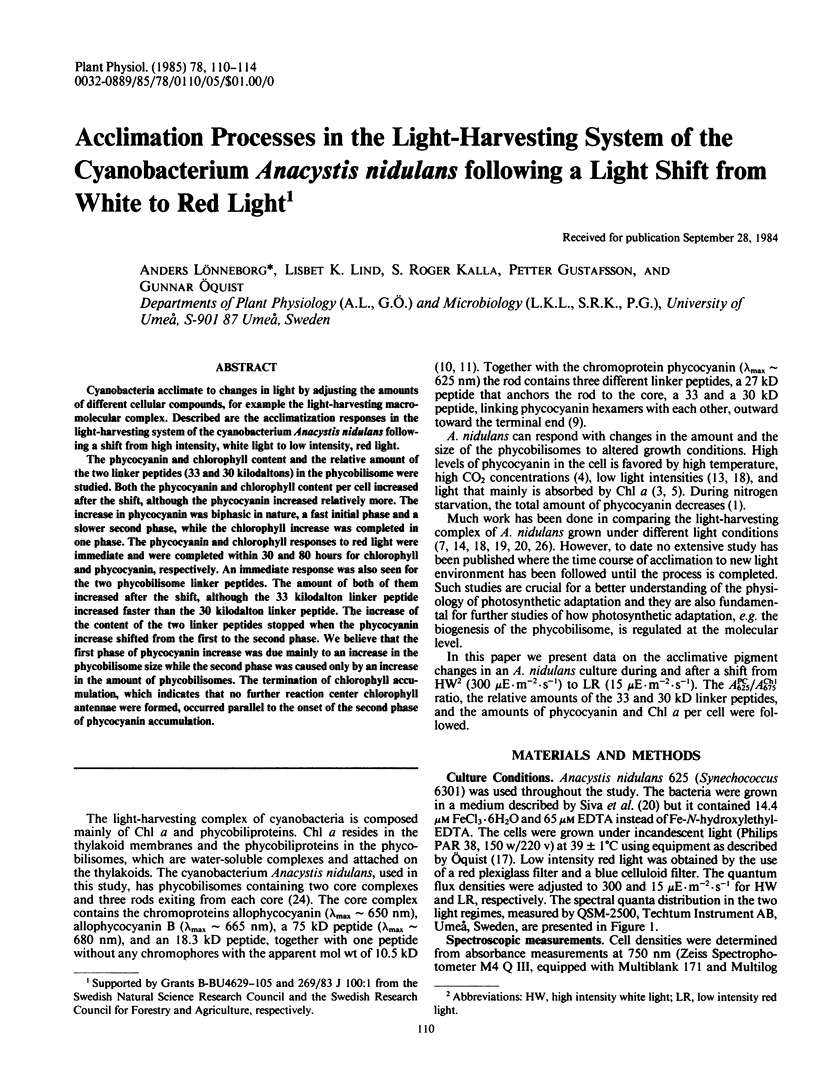
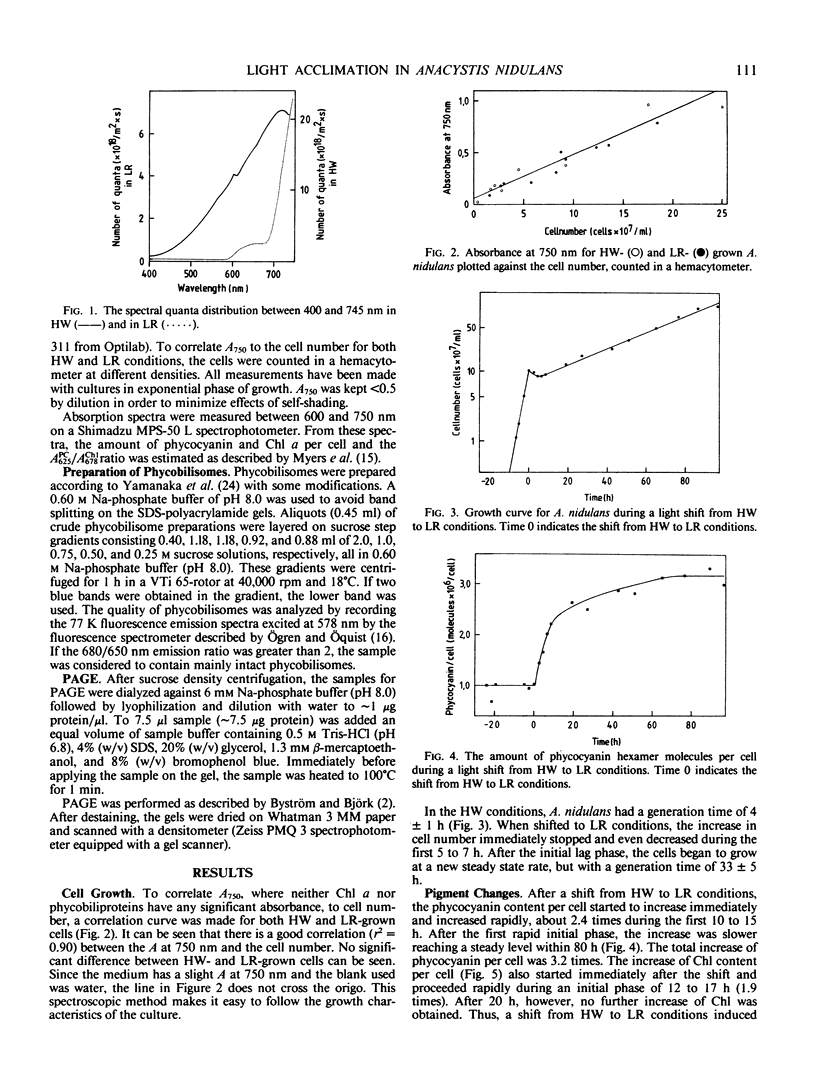
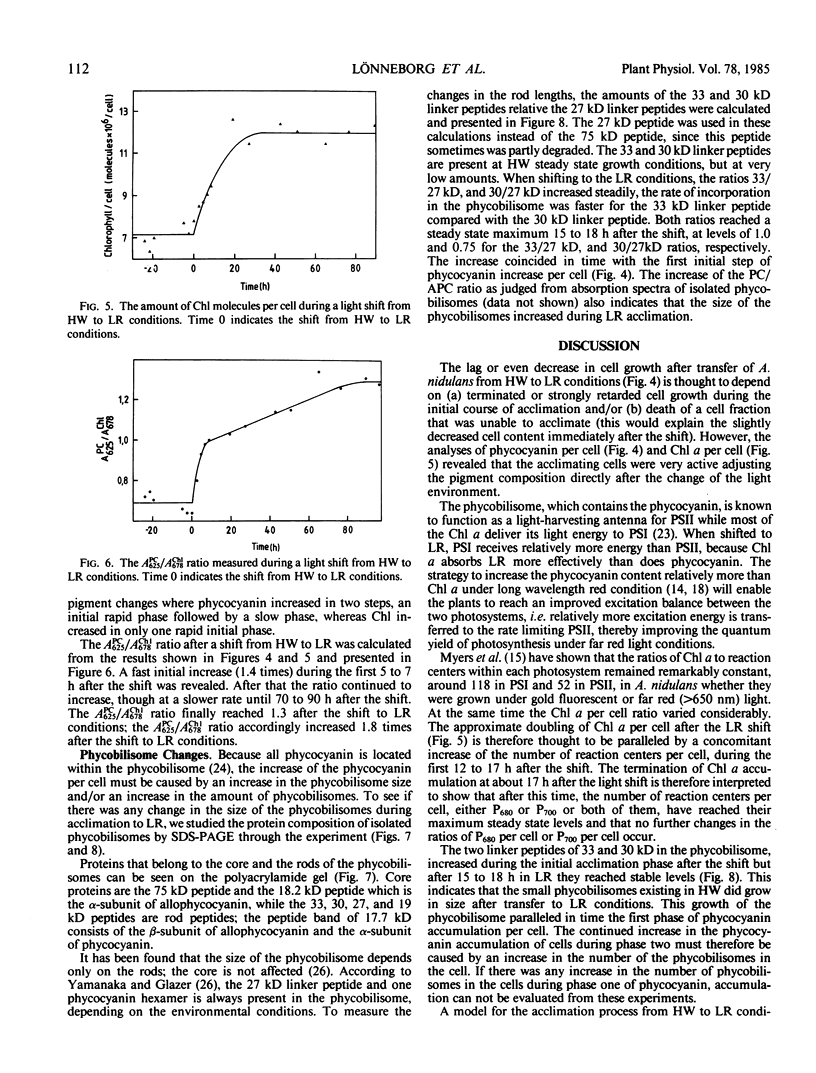
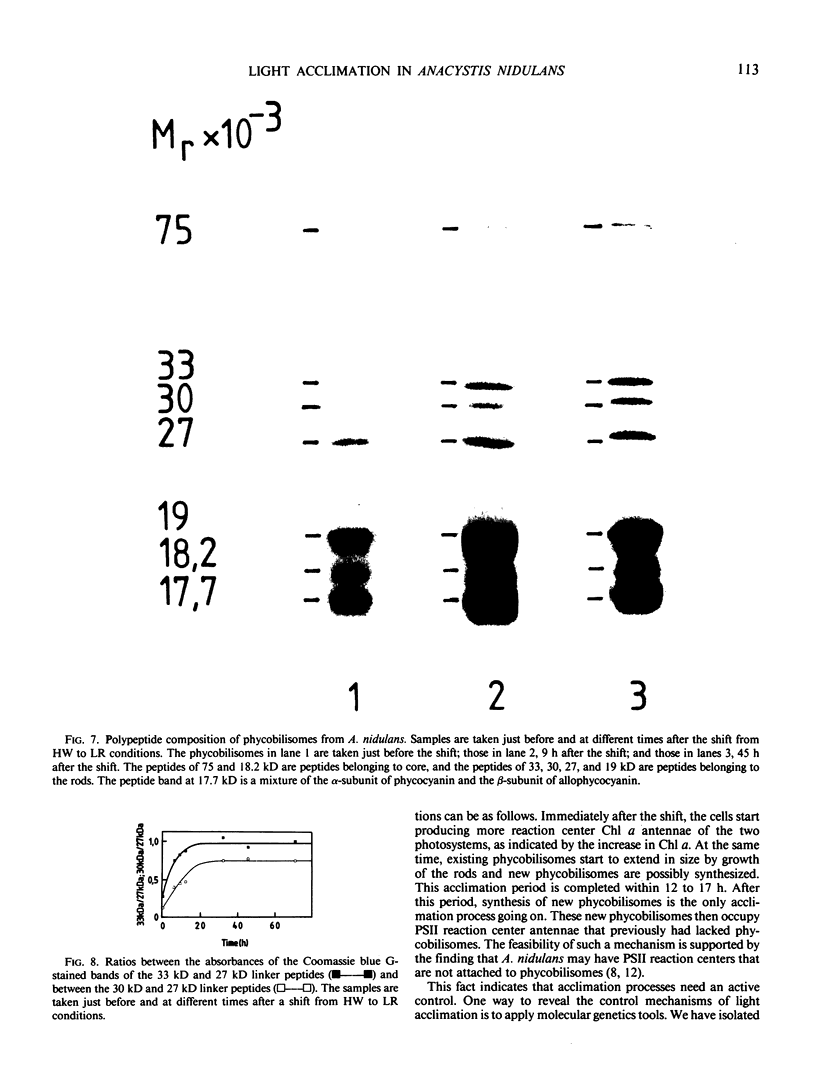
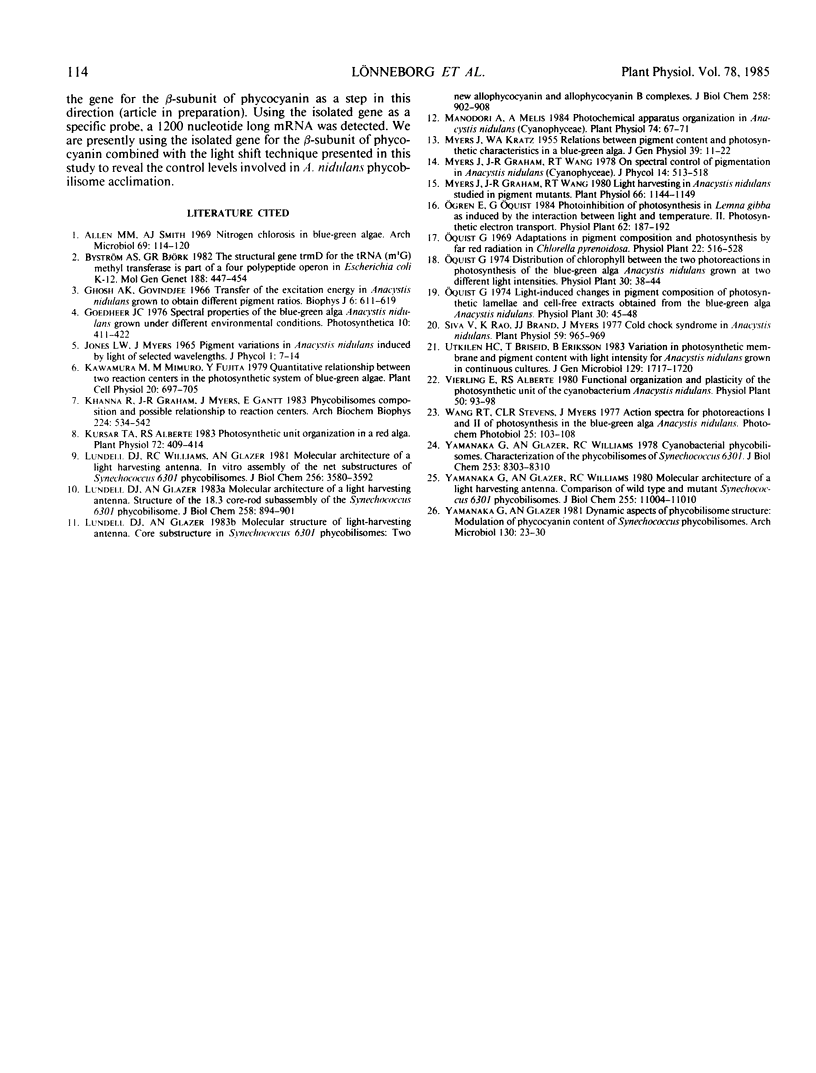
Images in this article
Selected References
These references are in PubMed. This may not be the complete list of references from this article.
- Allen M. M., Smith A. J. Nitrogen chlorosis in blue-green algae. Arch Mikrobiol. 1969;69(2):114–120. doi: 10.1007/BF00409755. [DOI] [PubMed] [Google Scholar]
- Byström A. S., Björk G. R. The structural gene (trmD) for the tRNA(m1G)methyltransferase is part of a four polypeptide operon in Escherichia coli K-12. Mol Gen Genet. 1982;188(3):447–454. doi: 10.1007/BF00330047. [DOI] [PubMed] [Google Scholar]
- Ghosh A. K., Govindjee Transfer of the excitation energy in Anacystis nidulans grown to obtain different pigment ratios. Biophys J. 1966 Sep;6(5):611–619. doi: 10.1016/S0006-3495(66)86681-X. [DOI] [PMC free article] [PubMed] [Google Scholar]
- Khanna R., Graham J. R., Myers J., Gantt E. Phycobilisome composition and possible relationship to reaction centers. Arch Biochem Biophys. 1983 Jul 15;224(2):534–542. doi: 10.1016/0003-9861(83)90241-2. [DOI] [PubMed] [Google Scholar]
- Kursar T. A., Alberte R. S. Photosynthetic Unit Organization in a Red Alga : Relationships between Light-Harvesting Pigments and Reaction Centers. Plant Physiol. 1983 Jun;72(2):409–414. doi: 10.1104/pp.72.2.409. [DOI] [PMC free article] [PubMed] [Google Scholar]
- MYERS J., KRATZ W. A. Relation between pigment content and photosynthetic characteristics in a blue-green algae. J Gen Physiol. 1955 Sep 20;39(1):11–22. doi: 10.1085/jgp.39.1.11. [DOI] [PMC free article] [PubMed] [Google Scholar]
- Manodori A., Melis A. Photochemical Apparatus Organization in Anacystis nidulans (Cyanophyceae) : Effect of CO(2) Concentration during Cell Growth. Plant Physiol. 1984 Jan;74(1):67–71. doi: 10.1104/pp.74.1.67. [DOI] [PMC free article] [PubMed] [Google Scholar]
- Myers J., Graham J. R., Wang R. T. Light Harvesting in Anacystis nidulans Studied in Pigment Mutants. Plant Physiol. 1980 Dec;66(6):1144–1149. doi: 10.1104/pp.66.6.1144. [DOI] [PMC free article] [PubMed] [Google Scholar]
- Rao V. S., Brand J. J., Myers J. Cold Shock Syndrome in Anacystis nidulans. Plant Physiol. 1977 May;59(5):965–969. doi: 10.1104/pp.59.5.965. [DOI] [PMC free article] [PubMed] [Google Scholar]
- Yamanaka G., Glazer A. N., Williams R. C. Cyanobacterial phycobilisomes. Characterization of the phycobilisomes of Synechococcus sp. 6301. J Biol Chem. 1978 Nov 25;253(22):8303–8310. [PubMed] [Google Scholar]



